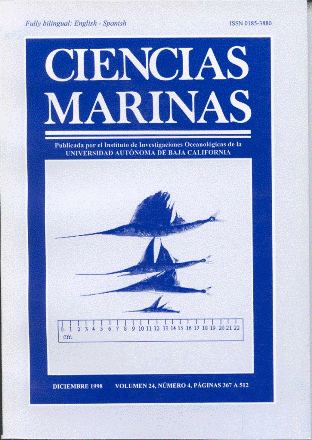The bull shark, Carcharhinus feucus (Valenciennes, 1841), from the Usumacinta River, Tabasco, Mexico, with notes on its serum composition and osmolarity
Main Article Content
Abstract
Five specimens of the bull shark, Carcharhinus leucas, were collected from a freshwater lagoon (2–3 ppt) and the Usumacinta River in Tabasco, Mexico, in May 1993. The serum osmoregulatory status of two individuals was analyzed: a mature 14-year-old male (2180 mm total length, the largest bull shark reported in fresh water) and a neonate (786 mm total length). Blood serum ionic concentrations of sodium chloride and calcium were reduced and compared with the seawater and marine forms. Urea serum contents were significantly lower than those reported for other bull sharks living in marine and freshwater environments, but much higher that those obtained for true freshwater elasmobranchs, such as potamotrygonid stingrays (Potamotrygoninae). Osmolarity was approximately 70% that of seawater. This osmoregulatory status suggested that the large bull shark analyzed had a longer time of residence in fresh water than other specimens reported in the literature.
Downloads
Article Details
This is an open access article distributed under a Creative Commons Attribution 4.0 License, which allows you to share and adapt the work, as long as you give appropriate credit to the original author(s) and the source, provide a link to the Creative Commons license, and indicate if changes were made. Figures, tables and other elements in the article are included in the article’s CC BY 4.0 license, unless otherwise indicated. The journal title is protected by copyrights and not subject to this license. Full license deed can be viewed here.

